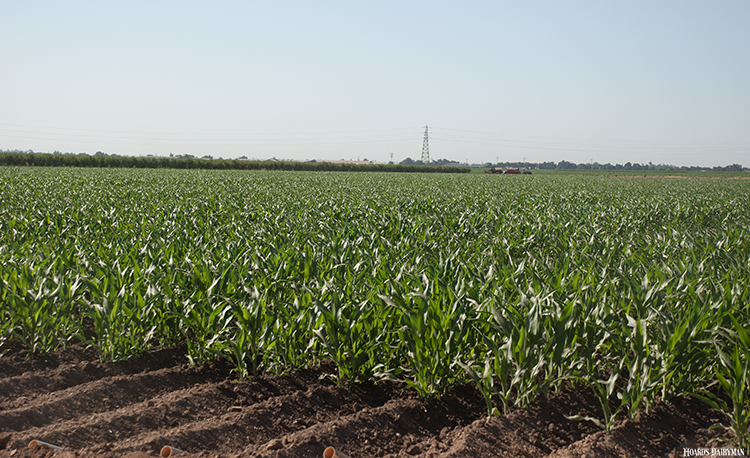
Agronomically speaking, healthier corn plants equate to improved crop performance and yield. Crop protection practices resulting in healthier corn likely also contribute to more efficiency with nutrient utilization. In theory, this takes place by way of reducing energy demand or other resource allocation necessary to fend off disease pressure or damage on the plant’s part.
This is a fascinating interaction within the plants, with yield and also crop quality ramifications. During industry meetings, webinars, podcasts, and within the Feeding Fundamentals column, we’ve been spending quite a bit of time covering agronomy and animal nutrition interactions. The focus has been silage to this point, and I believe we have a reasonable understanding of how improved seed genetics and crop protection practices are contributing to greener, healthier plants and improved fiber digestibility but lesser grain digestibility in silage. We covered this topic in depth with the inaugural Herd It Here podcast. Give the episode a listen for more detail.
It applies to grain, too
The grain and starch digestibility topic has resonated with both nutritionists and dairies from the East to West Coast. While the factors relating to suboptimal starch digestibility in silage are likely understood, we’re seeing the same in high moisture or dry ground grain and we’ve been scratching our heads. The impact factors contributing to the harder and less digestible grain haven’t been clear. This might be changing though, as a couple of weeks ago, a hypothesis started to emerge following a cordial conversation in Pennsylvania with my friend and colleague Chris Canale.
Chris and I, along with fellow colleagues in the seed industry, were sitting around a table talking about the impact starch digestibility has on dairy nutrition and economic performance. We were referencing Rock River Laboratory feed analysis quality trends to augment the discussion. We began talking about starch digestibility in silage. However, Chris drove the discussion toward poor-feeding high moisture and dry ground corn. The laboratory data substantiated his observations.
The figure below clearly showcases how 2020 and 2021 dry ground corn is notably less digestible relative to the prior couple of crop years. To put these differences in milk production terms, there are probably several pounds of milk potential left on the table for a dairy farm feeding 10 to 15 pounds of shelled corn. Understanding that starch digestibility relates to butterfat yield, I also believe that more slowly digesting corn grain is contributing to the record high component and milkfat yields, which Corey Geiger covered in the April 24 Hoard’s Dairyman Intel, “Nation’s milkfat levels push past old record.”
The tie to nitrogen
Back to the hypothesis that has come to light relating to shelled corn digestibility, we’re speculating that improved crop and plant health are partly at play. Years back at The Four-State Dairy Nutrition and Management Conference, Randy Shaver and Pat Hoffman noted how higher nitrogen fertility relates to harder and less digestible grain. Building upon this concept, in theory, and as noted above, healthier plants are more efficient with nutrients contributing to more efficient nitrogen utilization. This efficiency gain in the corn plant may theoretically equate to higher test weight and more dense grain. Denser grain then, in turn, relates to harder grain and less digestible starch for dairy or beef cattle.
At this point, this is an emerging hypothesis. Admittedly we’re connecting quite a few dots, but I think we’re onto something. We’re going to chase this hard with expert agronomists and other colleagues as the grain quality over the past two years is having a big impact on feed costs and dairy performance.
If our plant health-to-grain quality hypothesis holds, then we can expect this to be our new normal in grain quality. Improved plant health is great! We’ll just need to be mindful of the starch digestibility ramifications and focus on optimizing:
- Kernel processing with snaplage or corn silage
- Mean particle size and surface area with dry ground or high moisture corn
- The dry ground corn goal is less than 300 micron mean particle size
- Also, stay tuned for breaking research from Cole Diepersloot and Luis Ferraretto on this topic
- Extensive fermentation for high-moisture corn, snaplage or corn silage
- Seed genetics
- Feed ingredient technologies such as enzymes or probiotics
Keep this topic in mind for the weeks and months ahead. We’ll continue to cover it as new insights or guidance come to light.
Figure 1: Dry ground corn starch rumen starch digestibility over the past four crop years for the Midwest and eastern U.S. regions, for thousands of samples analyzed by Rock River Laboratory









